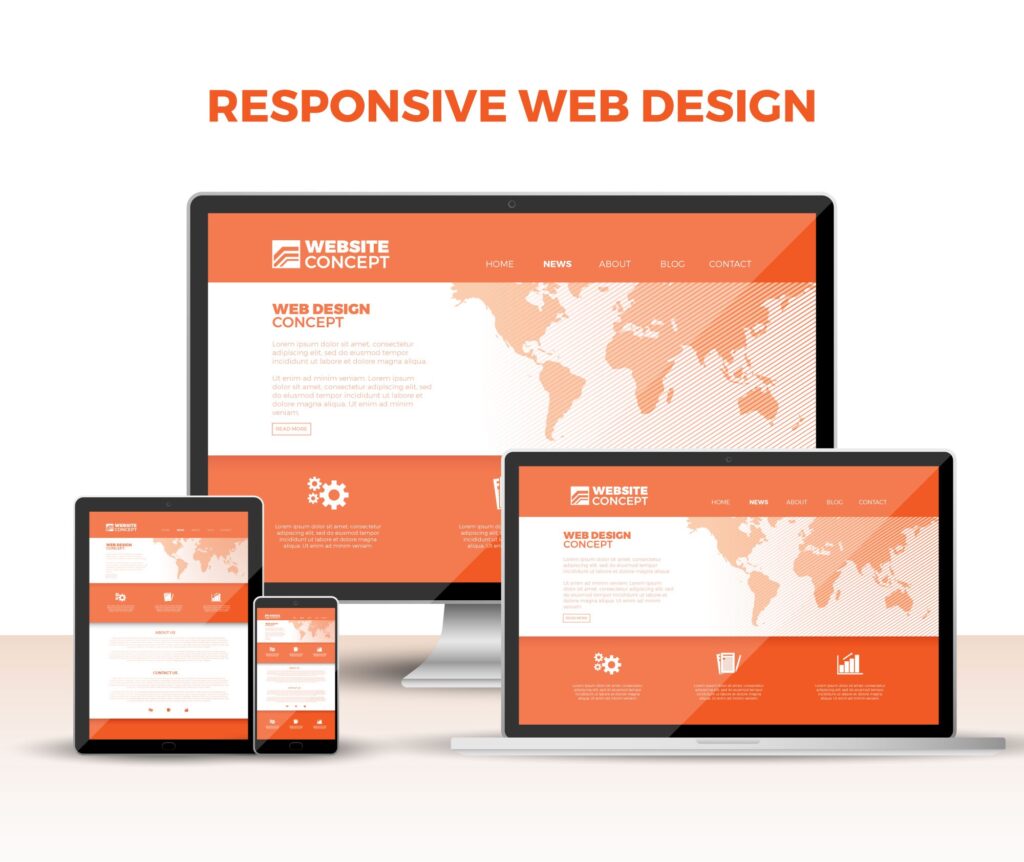- Businesses in the present digital era must have a strong online presence in order to succeed. One of the most effective ways to establish that presence is to build your business website. Whether you're a small startup or a growing enterprise, your website acts as the digital storefront for your brand. In this comprehensive guide, we'll walk you through every step you need to take to create a professional, user-friendly, and SEO-optimized business website.

Why You Need to Build Your Business Website?
- Before we dive into the steps, let’s understand why building your business website is crucial:
24/7 Accessibility: A website allows potential customers to access your services and products anytime.
Credibility: A professional website builds trust and reinforces your brand’s legitimacy.
Marketing and Sales Tool: It serves as a platform for online marketing, lead generation, and sales.
Customer Engagement: Offers multiple ways to interact with customers through contact forms, chatbots, and newsletters.
Step 1: Define Your Website Goals
Have a clear idea of what you want your website to do before you begin. Ask yourself:
Do I want to generate leads or make direct sales?
Am I concentrating on customer service or brand awareness?
Who is my target audience?
Setting specific goals will help guide the design, content, and functionality of your website.
Step 2: Choose a Domain Name
Have a clear idea of what you want your website to do before you begin. Ask yourself:
Do I want to generate leads or make direct sales?
Am I concentrating on customer service or brand awareness?
Who is my target audience?
Setting specific goals will help guide the design, content, and functionality of your website.
Step 3: Select a Web Hosting Provider
A web host stores your website files and makes them accessible online. Key factors to consider:
Uptime Guarantee: Look for 99.9% uptime or higher.
Speed and Performance: Fast load times enhance user experience and SEO.
Customer Support: 24/7 support can be invaluable.
Popular hosting providers include Bluehost, SiteGround, and HostGator.
Step 4: Select the Appropriate CMS or Website Builder
To build your business website, choose a platform that suits your needs:
WordPress: Highly customizable and SEO-friendly.
Shopify: Ideal for eCommerce businesses.
For beginners who wish to use drag-and-drop functionality, Squarespace or Wix are great options.
Make sure the platform supports mobile responsiveness, security, and integration with marketing tools.
Step 5: Design Your Website Layout
Your website design should align with your brand identity and be easy to navigate. Key components include
Homepage: The first impression—clearly state who you are and what you offer.
About Page: Share your story and mission.
Services or Products Page: Showcase what you sell or provide.
Contact Page: Include a form, map, and other contact details.
Blog Section: Useful for content marketing and SEO.
Use consistent fonts, colors, and visuals to strengthen brand recognition.
Step 6: Create High-Quality Content
When it comes to drawing in and keeping visitors interested, content is everything. Your content should be
Informative and Valuable: Answer customer questions and offer solutions.
SEO-optimized: Make use of pertinent keywords such as “build your business website,” internal links, and meta tags.
Well-Structured: For readability, use bullet points, headings, and brief paragraphs.
Consider creating landing pages, service pages, case studies, and FAQs to add depth to your site.
Step 7: Optimize for SEO
Your website will rank higher in search engine results if you use search engine optimization (SEO). Important steps include:
Keyword Research: Conduct keyword research to find the terms that people are using to find you.
On-Page SEO: Make use of keywords in headers, content, meta descriptions, and titles.
Image Optimization: Image optimization involves using descriptive alt language and compressing photos.
Mobile Optimization: Ensure your site is fully responsive.
Page Speed: To speed up load times, use resources like Google Page Speed Insights.
Step 8: Add Essential Features
Improve the usability and functionality of your website by doing the following:
SSL Certificate: Adds security and trust.
Live Chat: Improves customer service and engagement.
Incorporate social media to connect with your audience across several platforms.
Google Analytics: Track user behavior and performance.
Call to Action (CTA): Guide users to take specific actions like signing up or buying.
Step 9: Test Before Launching
Before going live, thoroughly test your website to ensure everything works properly.
Check All Links: Ensure there are no broken links.
Test Forms: Make sure contact and subscription forms are functional.
Cross-Browser Testing: Verify compatibility with Chrome, Firefox, Safari, and other browsers by conducting cross-browser testing.
Mobile Testing: Test responsiveness on different devices.
Step 10: Launch and Promote
It is time to launch and promote your website now that it is ready.
Announce via Email and Social Media
Submit to Search Engines (Google, Bing)
Run Online Ads or Campaigns
Request Backlinks from Partners and Directories
Regularly update your site with new content, testimonials, and product offerings to keep it fresh and relevant.
Maintenance Tips After You Build Your Business Website
Maintaining the functionality of your website is as crucial as creating it:
- Regular Backups: Prevent data loss with automated backups.
- Update Software and Plugins: Keep your platform secure.
- Monitor Performance: Utilize tools such as Google Analytics and Search Console to keep an eye on performance.
- Fix Errors Promptly: Address bugs and broken links quickly.
- Refresh Content: Regularly update blogs and landing pages.
Final Thoughts
- To succeed in the digital landscape, you must build your business website strategically. It’s not just about having an online presence but creating a platform that reflects your brand, engages your audience, and drives business growth. Follow this step-by-step guide to ensure your website is professional, functional, and ready to compete in the online marketplace. Need help building your site? Consider hiring professional web developers or using trusted website-building platforms to ensure the best results.



